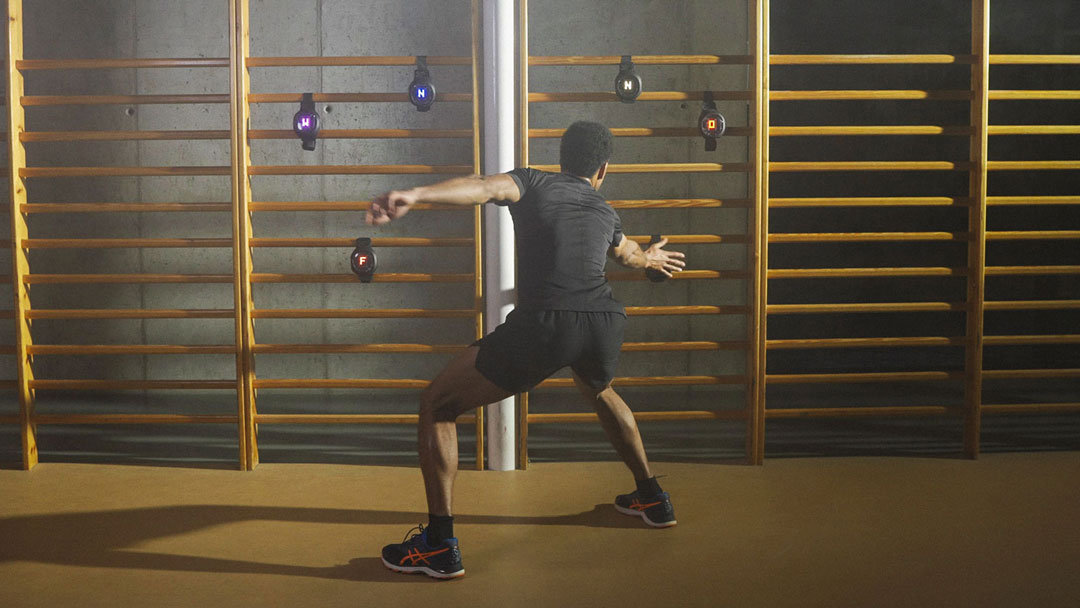Soccer, a sport that captivates hearts and minds worldwide, is as physically demanding as it is tactically challenging. The significance of soccer warm-ups in preparing players for this demanding environment is crucial. This comprehensive guide delves into the various aspects of soccer warm-ups, highlighting their importance, benefits, challenges, and their impact on performance and decision-making.
The essential role of soccer warm-up
Soccer warm-ups are a series of exercises designed to prepare players for the physical and mental rigors of the game. These routines are essential for enhancing performance, preventing injuries, and ensuring players are mentally tuned to the game's demands.
This is why educating players about the importance of warm-ups is crucial. Players who understand the benefits are more likely to engage fully in the routines and take their warm-up seriously.
Dynamic soccer warm-up: a progressive approach
Dynamic soccer warm-ups have gained popularity for their effectiveness in preparing players for the game's dynamic nature. These routines involve movement-based exercises like jogging, dynamic stretching, agility drills, and sport-specific movements, offering a more functional preparation compared to traditional static stretching.
Benefits of soccer warm-ups
- Injury Prevention: Warm-ups increase muscle temperature and flexibility, significantly reducing the risk of muscle strains and joint injuries.
- Performance Enhancement: Improved blood flow and oxygen delivery to muscles lead to better endurance, strength, and speed.
- Mental Readiness: Warm-ups aid in focusing the mind, reducing pre-game anxiety, and strategizing for the match.
Optimal duration of warm-ups
Recent studies suggest that the duration of warm-ups is crucial. Shorter warm-ups, approximately 8 minutes long, have been shown to significantly improve sprint performance in players without inducing fatigue, unlike longer warm-ups that might decrease sprint performance.
Components of an effective soccer warm-up
A comprehensive soccer warm-up should encompass:
- Cardiovascular Activities: To elevate heart rate and improve blood circulation.
- Dynamic Stretching: Targeting major muscle groups used in soccer.
- Sport-Specific Drills: Simulating in-game movements to prepare for the game's physical demands.
- Cognitive Exercises: Including reaction time and strategic thinking drills.
- Mental Preparation Techniques: Such as visualization and controlled breathing exercises.
Challenges in implementing soccer warm-up exercises
Designing effective soccer warm-ups involves addressing several challenges:
- Time Management: Fitting comprehensive warm-ups into limited pre-game timeframes.
- Individual Needs: Creating warm-ups that cater to the diverse physical and psychological needs of players.
- Adapting to New Techniques: Continuously updating routines with the latest sports science developments.
Technological innovations in soccer warm-ups
Technological advancements have introduced a new dimension to soccer warm-up exercises. Interactive training tools like A-Champs' ROX System enhance both physical and cognitive skills, making warm-ups more engaging and effective.
Balancing traditional and modern warm-up methods
While traditional warm-up methods have their place, integrating dynamic exercises and technological tools can lead to more comprehensive and effective routines. Coaches and players should aim to find a balance that suits both team and individual player needs.
The psychological aspect of warm-ups
Soccer warm-ups also have a psychological component. They set the tone for the game and can boost confidence and team morale. Effective warm-up routines can help players transition from the stresses of everyday life to the focused mindset required for soccer.
Impact of soccer dynamic warm-up on decision making
Effective warm-ups extend beyond physical preparation; they also enhance mental acuity, which is crucial for making quick, accurate decisions during the game.
The evolution of soccer warm-ups
Over the years, soccer warm-ups have evolved from simple stretching routines to complex, multifaceted exercises that incorporate physical, mental, and technological elements. This evolution reflects the growing understanding of sports science and its application in enhancing athletic performance.
As our understanding of sports science continues to grow, so too will the methods and techniques used in soccer warm-ups. Future trends may include more personalized warm-up routines, greater use of technology, and an even stronger focus on mental preparation.
The role of coaches in soccer warm-ups
Coaches play a crucial role in designing and implementing effective warm-up routines. They must consider the team's overall strategy, individual player needs, and the latest sports science research to create the most effective warm-up routines.
Soccer warm-ups also serve as an opportunity for team building. Coordinated drills and exercises can foster a sense of unity and teamwork, essential for on-field success.
Monitoring and adjusting warm-ups
Continuous monitoring and adjustment of warm-up routines are essential. As we said earlier, coaches should observe the effectiveness of their warm-ups and be willing to make changes based on player feedback, performance, and the latest research.
Customizing warm-ups for different player roles
Different player roles in soccer require different physical and mental preparations. For instance, goalkeepers may need more specialized drills focusing on reflexes and hand-eye coordination, while outfield players might focus more on agility and endurance exercises.
Youth soccer and warm-ups
In youth soccer, warm-ups are not just about physical readiness; they also play a crucial role in developing fundamental skills and a love for the game. Youth coaches must design warm-ups that are fun, engaging, and appropriate for the age and skill level of the players.
Integrating nutrition and hydration into warm-ups
An often-overlooked aspect of soccer warm-ups is the role of nutrition and hydration. Proper hydration and a light, energy-boosting snack can significantly enhance the effectiveness of a warm-up routine. Coaches and players should consider these factors as part of their overall preparation strategy.
Recovery and post-game warm-downs
While warm-ups prepare players for the game, warm-downs are equally important. Post-game routines that include stretching, cool-down exercises, and recovery strategies are essential for maintaining long-term fitness and preventing injuries.
Customizing warm-ups for different weather conditions
Weather conditions can significantly impact the effectiveness of warm-up routines. In colder climates, longer warm-ups may be necessary to properly prepare the muscles, while in hotter conditions, emphasis might be placed on hydration and avoiding overheating.
The role of equipment in warm-ups
The use of equipment, such as cones, balls, and resistance bands, can add variety and specificity to soccer warm-ups. These tools can help simulate game situations and enhance the overall quality of the warm-up.
As we said earlier, at A-Champs, we recommend betting on the latest technologies to take your warm-ups to the next level. That is why, both our Rox System and soccer rebounder boards are a great way to get ready for match day.
Incorporating flexibility and balance exercises
Flexibility and balance are critical components of soccer fitness. Incorporating exercises that improve these aspects can enhance a player's agility and control on the field.
The community aspect of soccer warm-ups
Soccer warm-ups can also serve as a community-building exercise, especially in youth and amateur leagues. They provide a space for players to interact, build friendships, and develop a sense of belonging to the team.
Conclusion
Soccer warm-ups are a vital aspect of the game, significantly impacting players' performance, safety, and decision-making abilities. A well-structured warm-up routine, combining traditional methods with dynamic exercises and modern technology, is key to achieving optimal performance. As soccer continues to evolve, so too will the approaches to preparing players for the game, ensuring they are always at their best when stepping onto the field.





Hinterlasse einen Kommentar
Diese Website ist durch hCaptcha geschützt und es gelten die allgemeinen Geschäftsbedingungen und Datenschutzbestimmungen von hCaptcha.